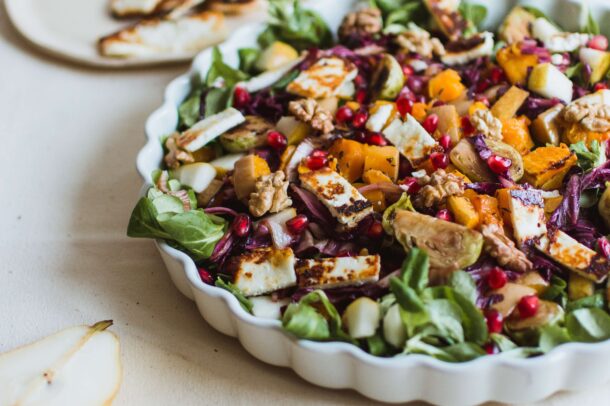Written by Lauren Kapphahn, BSc, RD
Photo by Klara Avsenik on Unsplash
Many people are becoming interested in either incorporating more vegan foods in their diets or in switching to a totally vegan diet. And as anyone who follows a vegan or vegetarian diet will tell you, the number one question they are asked about their diet is “How do you get your protein?” Read on to learn more about including vegan-friendly proteins in your diet!
What is a vegan diet?
A vegan diet consists of 100% plant-based foods with no animal products, including meat, fish, dairy products, or eggs.
How much protein do I need?
Many factors can affect your individual protein requirements, including the stage of CKD, current treatment plan (i.e. non-dialysis vs dialysis), or other health conditions you may have. Speak with your renal dietitian or your kidney health team to get a better understanding of what amount of protein is right for you.
I have heard that plant-based foods are often higher in potassium and phosphorus (phosphate). Do I need to limit my potassium and/or phosphorus intake?
Some people in the early stages of CKD do not need to limit their potassium or phosphorus intake, while others may need to restrict these.
There is no benefit to restricting potassium or phosphorus unless your blood levels are high. Your renal dietitian or kidney doctor can tell you how much potassium you should have each day, and if you need to limit phosphorus intake.
Which vegan foods contain protein?
High protein foods (10-20g protein per serving)
| Extra firm tofu | 3 oz serving |
| Beans, lentils, or chickpeas *higher in potassium | 1 cup serving |
| Edamame beans *higher in potassium | 1 cup serving |
| Tempeh *higher in potassium and phosphorus | 3 oz serving |
| *Mock meats (e.g. Impossible burger, Beyond Meat Sausage, etc) | Serving size varies |
Moderate protein foods (5-10g protein per serving)
| Firm Tofu | 3 oz serving |
| Medium Firm Tofu | 3 oz serving |
| Soft Firm Tofu | 3 oz serving |
| Soy milk | 1 cup serving |
| Quinoa, cooked *higher in potassium and phosphorus | 1 cup serving |
| Oatmeal, cooked *higher in potassium | 1 cup serving |
| Green peas, cooked | 1 cup serving |
| Unsalted nuts *higher in potassium and phosphorus | ¼ cup serving |
| Unsalted seeds (e.g. hemp seeds, chia seeds etc) *higher in potassium and phosphorus | ¼ cup serving |
| No Salt Added nut and seed butters (e.g. natural peanut butter, almond butter, tahini) *higher in potassium and phosphorus | 2 tbsp serving |
| *Mock meats (e.g. bean burger, “chicken” tenders, “fish” filets, etc) | Serving size varies |
*Note: There is a wide variety of mock meats available in the grocery store, and more options are popping up on shelves every day. They may all have a different amount of protein per serving. These items tend to be higher in added salt and may also be a source of potassium and contain phosphate additives. Always check the label!
Helpful hints:
Aim to get a variety of protein sources in your diet.
Choose less processed forms of protein (e.g. tofu, beans/lentils, green peas) more often in your meals. When you prepare these at home, you can control the added salt and seasonings to better support your kidney health goals.
Some plant-based milk alternatives, including soy milk, contain phosphate additives. Most plant-based milk alternatives other than soy milk (including oat, almond, cashew, rice, and coconut milks) are low in protein.
Unlike their dairy-based counterparts, most vegan cheeses and yogurts are typically not a good source of protein.
While vegan protein powders, ready-to-drink protein beverages, and protein bars can be a great way to easily add some protein into your diet, many of these products have additional vitamins and minerals added. It is always important to read the label and understand the amount of protein, sodium, potassium, and phosphorus in each serving of protein powder.
Soaking dried beans, lentils, and chickpeas prior to cooking them is a great way to reduce their potassium content by more than 80%! Soak dried legumes for 12 hours in a bowl of water. After 12 hours, discard the soaking water and prepare dried beans as usual.
Some brands and types of tofu contain phosphate additives. Always check the ingredients list before purchasing.
These vegan-friendly recipes from Kidney Community Kitchen pack a protein punch!
And check out these excellent resources and blog posts for more on vegan diets and CKD:
Soy vs. Animal: Which Protein Should I Choose For My Kidneys?
Reducing the Potassium in Legumes
Can Kidney Beans and Plant-Based Proteins Be Kidney Friendly?
